Just under 2 years ago I acquired a 2001 Birdy folding bicycle, and explained here how I upgraded it to more modern standards.
Since then the Birdy has accompanied me on many business trips, especially to smaller cities with good bike infrastructure where bike hire is either expensive or non-existent (Maastricht, Bruges, Aix-en-Provence, Bochum) and on some longer trips too (a day trip from Bruges to Knokke, and a cross border trip from Tourcoing to Kortrijk). It’s been to Rome, London and Brussels as well, but those trips I could just as well have managed with local bike hire.
The crux is here that I am not using the Birdy every day – I do not have a regular commute. And for trips within Berlin I have a regular city bike and trailer for moving goods.
So a folding bike has been a tremendous thing to have, but as an addition to my regular bike, not as a replacement for it. Read this blog post with that in mind. And if you need a foldable bike for everyday commuting what I say here might not be relevant to you.
But why, I hear you ask, if you have a Birdy do you need another folding bike? The answer is that we’re a two-person household. The new bike ought to allow the two of us to make trips with the folding bikes.
Choosing the bike
I’ve had an eye on second hand folding bikes on eBay Kleinanzeigen for some time. A second hand Brompton is too expensive, and the main advantage of a Brompton – how easy it is to fold, and how compact it is once folded – is not my preoccupation here. So that was out. Secondhand Birdy bikes, even those in a state almost as desolate as the one I repaired 2 years ago, are over €400 – and the nature of the Birdy means some parts can be costly. So that, sadly, was ruled out as well. I’ve used Decathlon’s folding bikes in the past – OK, but the wheelbase is very short leading to a strange riding position, so I’d rather not go for that. So I settled on a Dahon folding bike as the best compromise – 20 inch wheels, reasonable fold, decent ride quality. Something akin to a Dahon Mariner D8 would be perfect.
The solution
It turns out that car maker MINI has been selling MINI Bikes since 2013 – with the idea that the rider would fold them up and put them in the boot of their MINI. I don’t care about the car part of this – the crux is that these bikes are essentially aluminium-framed Dahon bikes (spec at the bottom here). The cost when the bike was introduced was €650. And I managed to purchase one for €120 on Kleinanzeigen – from a guy who had it since it was new.
The bike was rideable (I tested it before buying it!) but was clearly in need of some upgrades and repairs. But wheels, frame, fork, seat post, saddle were all OK – so I had enough to work with. The tyres are Schwalbe Marathon – not my favourite, but OK for now, and can be retained. Brakes were likewise OK, so can be retained. The seller also told me that chain and cassette were replaced recently – helpful. Pre-upgrades the bike weighed 11.3kg.
Parts purchased
Black plastic 53mm wide mud guards for 20″ wheels – €22,90 from eBay
Luggage rack for 20″ bikes, 25kg max weight – €23,99 from eBay
*** NOTE *** This luggage rack proved to be a bad purchase for this bike and was replaced – see updates below!
Riding anywhere without mudguards is not to my taste! And while the original MINI bike had plastic mudguards, these were long gone. Experience on the Birdy with metal mudguards has not been positive, so solid plastic mudguards were chosen. The SKS guards ordered are – at 53mm wide – a little wider than I would need, but the range of mudguards for 20 inch wheels is quite low. The only problem with mounting these is that the supplied supports are far too long (see picture below, left) – and the metal is quite resistant! I needed to use a Dremel to cut these to size.
The way a Dahon bike folds allows a regular luggage rack to be added without any problem (not the case on a Birdy!), and I prefer that option to front wheel or handlebar-mounted bags. The Kubbinga 20″ rear luggage rack is really solid, and has no unnecessary extras – it mounts easily, is simple to join onto the Dahon frame. The only downside is it did not ship with any mounting screws (I had a few spare, so no problem there).
Sigma 35 Lux USB rechargeable front light – €21,95 + €4,50 postage from eBay
Busch+Müller USB Rechargeable backlight to mount on the luggage rack – €22,90 from eBay
Front and rear reflectors – €6,99 from eBay
The MINI bike has no built in dynamo, and replacing the whole front wheel to add a hub dynamo was more money than I was willing to spend. So I opted for USB-chargeable lights (both use micro-USB ports). The Sigma front light mounts on the handlebars using a flexible rubbery strap, and the Busch+Müller rear light clips into a mount screwed onto the luggage rack. The front light is supposed to run for 5 hours on a charge, the rear light 15 hours. My fear is that the front light might eventually slip on the handlebars – I will update the blog post once I have tested this in real life conditions (on Bruges cobble stones for example!)
Ergonomic handlebar grips – €8,76 + €2,99 postage from eBay
TranzX Security Quick Release Skewers – €14,99 from eBay
XLC 24-28 inch kick stand – €9,15 + €4,30 postage from eBay
I am a big fan of handlebar grips you can sort of lean your palms on – and I needed ones that would not complicate the folding of the Dahon. I use TransX security skewers on all my bikes, although I encountered a problem here – the front skewer on a Dahon is shorter than on other bikes, so the security skewers only work for the back wheel and seat post. And for the kick stand I initially made an error – I initially ordered an adjustable kids kick stand (€7,67 from eBay) but a standard 20″ bike kick stand is too short for a Dahon bike! The XLC stand is hence the best alternative – if I need to shorten it, I can do so by using a Dremel to cut off part of the extensible inner aluminium piece. So be careful here!
Abus Bordo GRANIT X Plus 6500/85cm – €59,00 + €4,30 postage from eBay Kleinanzeigen (this is normally €79,95 new on Amazon here)
The biggest headache of all. A lock! I want something safe enough to lock this bike outside, and I need something comparatively small to stow. And so – as on the Birdy – this leads me back to the Bordo folding locks by Abus. The Granit X Plus has the highest security rating, but weighs over 1.7kg. Frustrating, but there is nothing better I think…
The total cost (excluding the erroneous purchase of the wrong kick stand!) is €120 for the bike, and €208,81 for all the parts (inc. postage) – so a total of €326,81
- Frame cleaned with soap and water (damn this thing was grimy!)
- Wheels dismounted, rims and tires checked, and wheels, rims and spokes washed in soapy water. Tires inflated after re-assembly, and brake blocks cleaned and position adjusted after re-mounting the wheels
- Cassette, chain, derailleur, pedals and pedal crank thoroughly cleaned and checked. Bolts between crank and chain ring checked and tightened. Chain oiled after re-assembly
- Rear mudguard and luggage rack (with light bracket) mounted together, not tightening screws fully at the start – to make sure everything has the correct length and is aligned
- Front mudguard mounted, and at the same time front brake cable shortened – as this was so long it was snagging on the frame
- Excess brake cable length cut off, and cable ends applied
- Kick stand mounted (see above – the 20″ one will be replaced with a XLC one)
- Handlebar grips, reflector and front light mounted. This required the brake levers and gear lever to be moved inwards slightly. Handlebar grips were very tight and needed to be hammered into place
Tools and materials required
- Allen keys and screwdrivers of various sizes
- Hammer
- Special cassette cleaning brush
- WD40
- Chain oil, and thin oil for pedals and crank
- Loads of old rags, a bucket of water, an old pan scourer, an old toothbrush, liquid soap
- Dremel
- Wire cutters
The result
Here is the bike, post-upgrades. And also stood next to the Birdy.
After the repairs the MINI bike weighs 12.9kg (excluding the lock) while the Birdy weighs 12.2kg.
The MINI bike folds to a size roughly 85 x 70 x 35 cm, while the Birdy folds smaller to roughly 80 x 60 x 35 cm. The MINI however is quicker and simpler to fold, and can be rolled when folded – not possible with the Birdy.
The ride varies quite a lot between both bikes. The Birdy – with its suspension – is both more comfortable but also more jittery than the MINI. The MINI by contrast feels much more similar to a regular bicycle.
I’ll update the blog post as I gather experience with the use of the bike! But for now I hope this post, like the one about the Birdy upgrade before it, serves as a useful template for others to follow!
Updates
I have now taken the Mini Bike on a 4 day trip to Bruges in Belgium, and a few issues became clear.
First there was a crack in the plastic lever that folds the pedals that I had not previously realised, meaning one pedal did not hold flat as I wanted. So I have taken the Decathlon folding pedals from the Birdy and put these on Mini bike:
The XLC stand also arrived, and has been mounted – this fits perfectly:
But the biggest headache was the pannier rack.
The rack that I had ordered was simply too short – any panniers mounted towards the back of it hung into the wheels, or if I mounted the panniers further forward the back of my heel would kick them when pedalling.
The solution was then to purchase a different pannier rack – a Tern Loader Rack. I bought this for €49,95 from the Just Bikes Bike Store in Charlottenburg. Unlike the original rack I had mounted that was made from steel, this one is made of aluminium, so even though it has more tubing it actually weighs less than the steel rack I had previously mounted. The only thing to watch out for: the top tube measures 16mm diameter – make sure the clips on your panniers can handle that! Ortlieb panniers can, older Vaude panniers (pre-QMR 2.0 systems cannot, QMR 2.0 system can). I can confirm this rack mounts perfectly on a 20″ wheel Dahon bike. The Busch+Müller USB Rechargeable backlight is then mounted on this rack.
So what is the bike like to ride?
It’s much more similar to a regular bike than it is to the Birdy – it’s firm and rather unforgiving, and the small wheels make it a bit bumpy at times. But on asphalt it is fine. The fold is not as small as the Birdy, but being able to wheel it while folded is a definite advantage.
Overall the Birdy will remain my principle folding bike, but I am very happy to have this Mini bike as well!




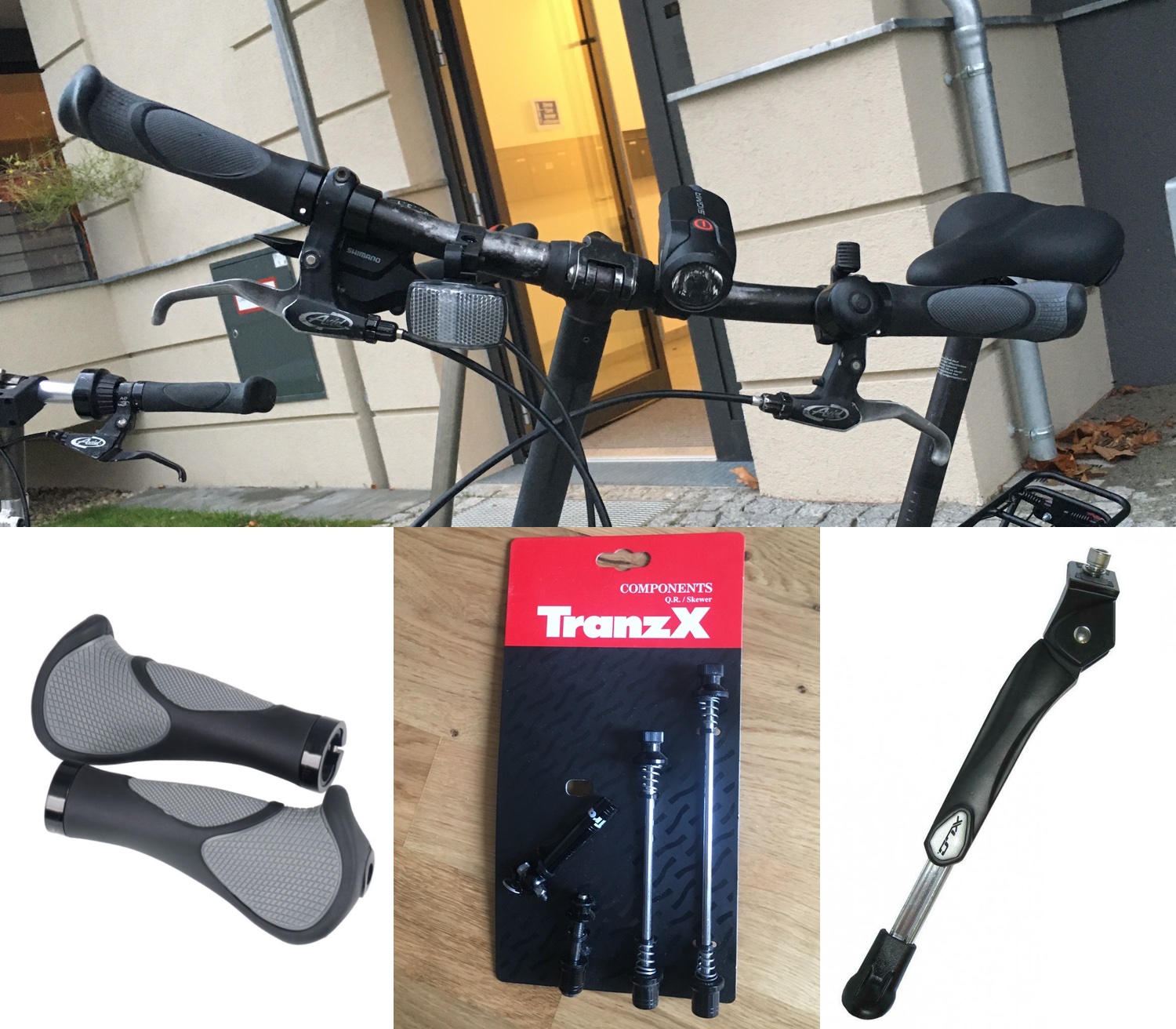
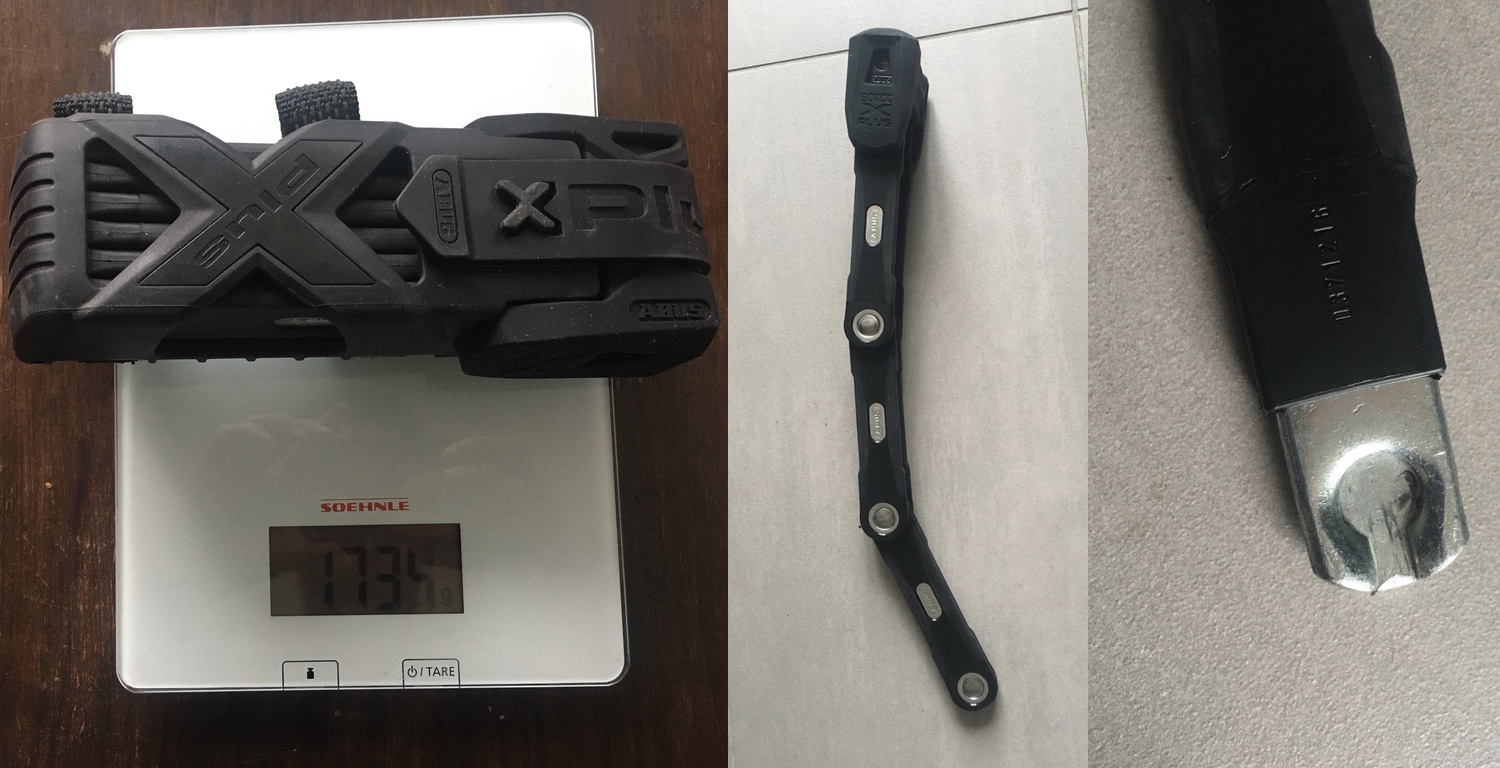
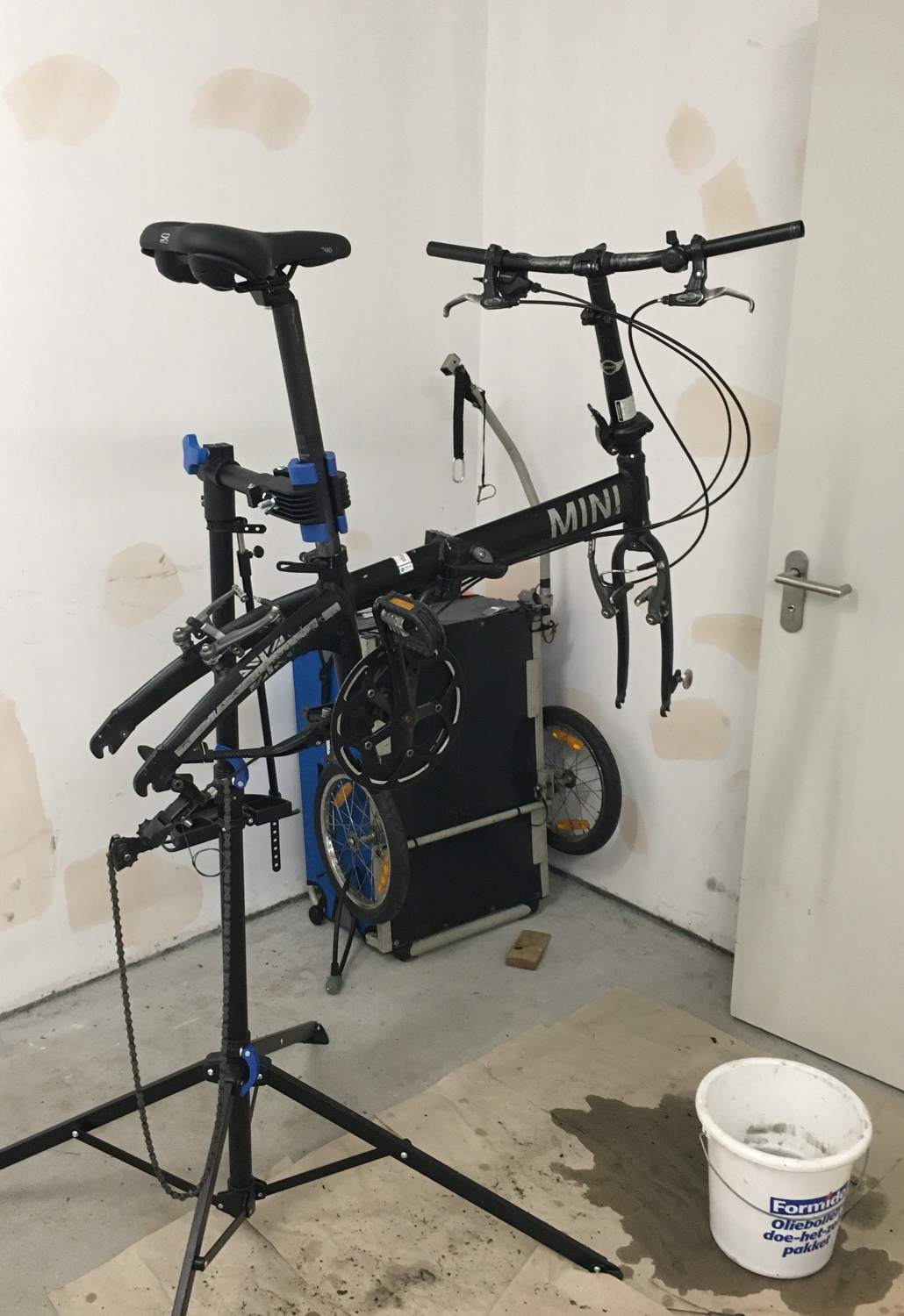
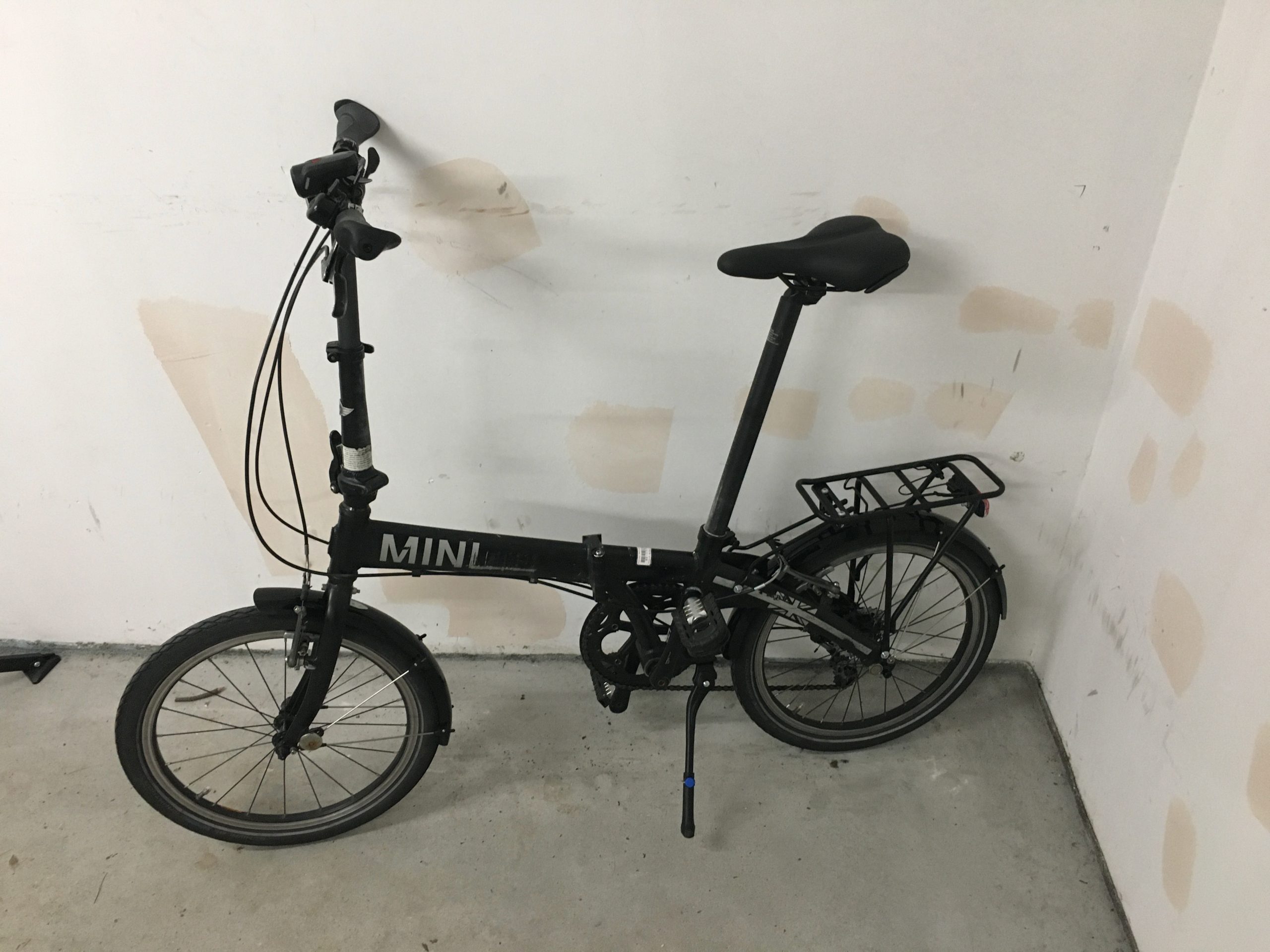
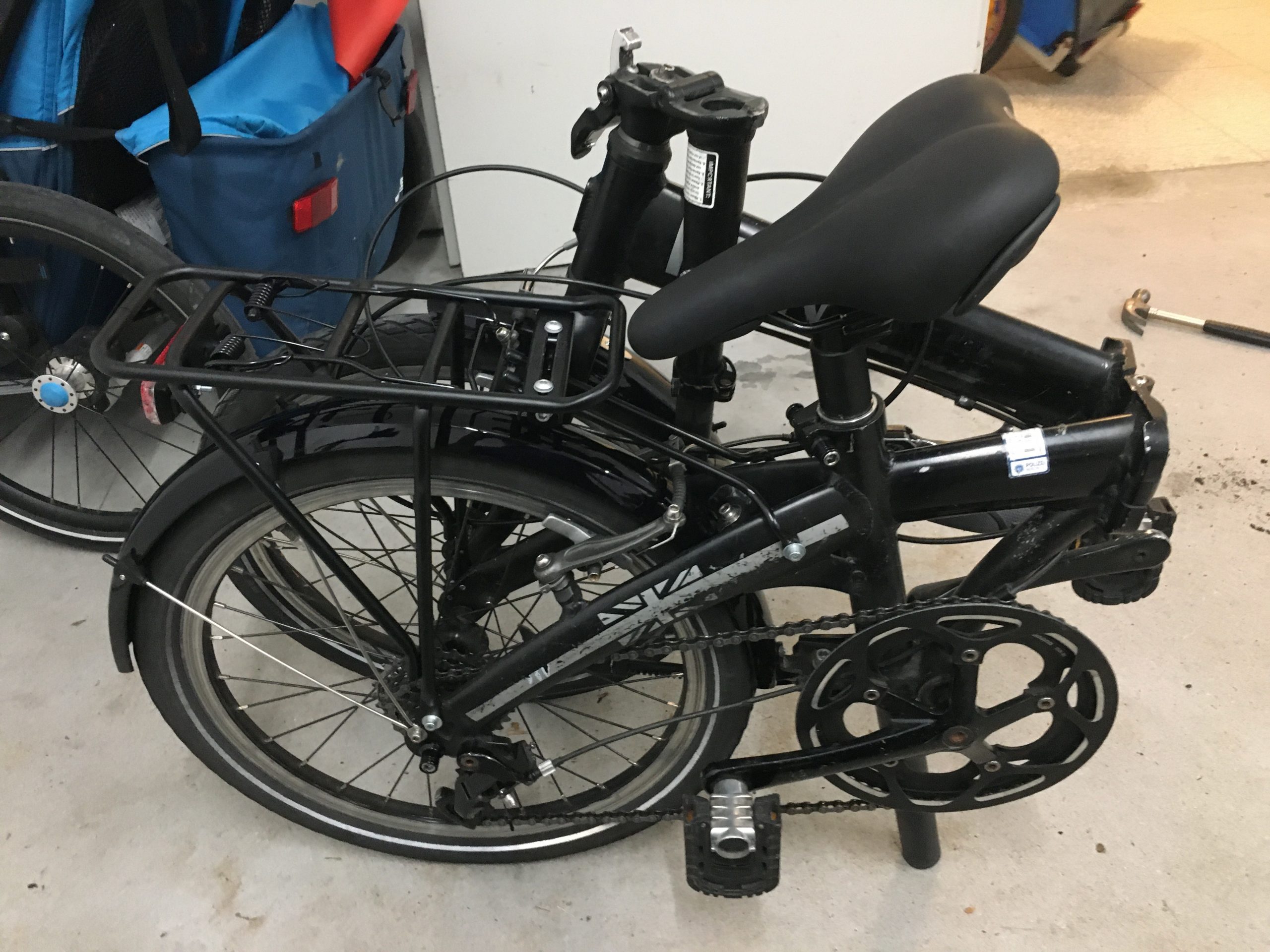
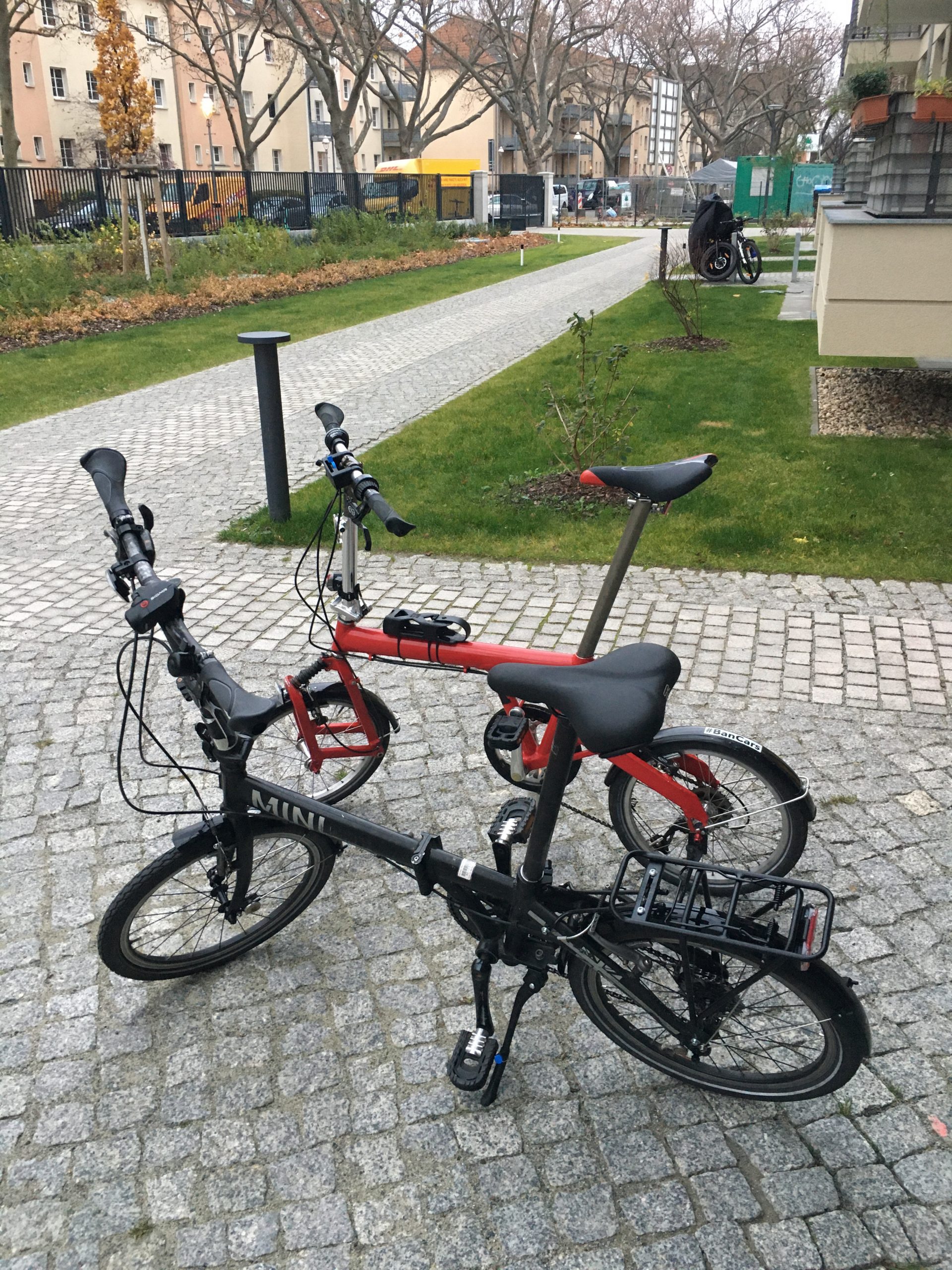
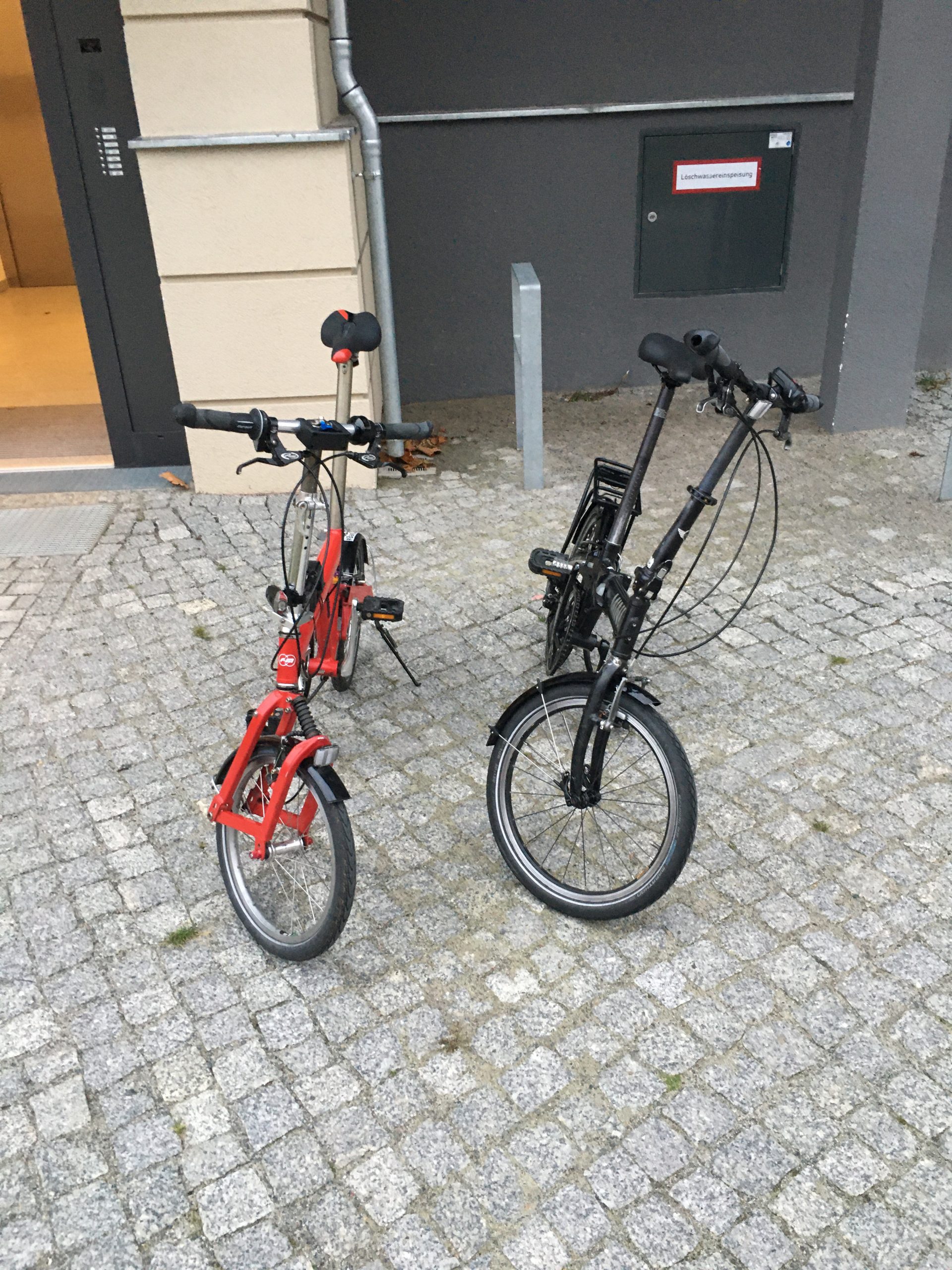
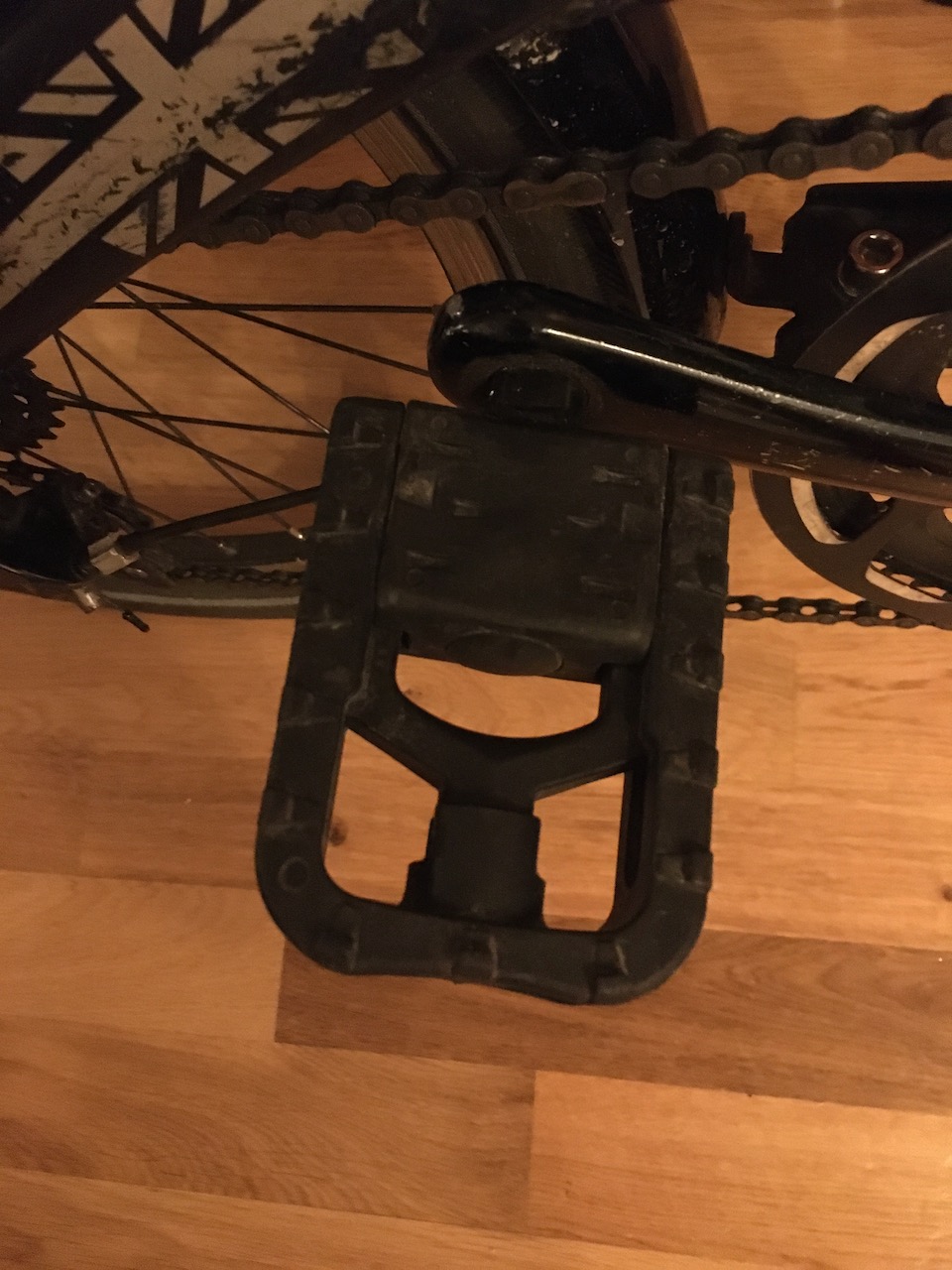

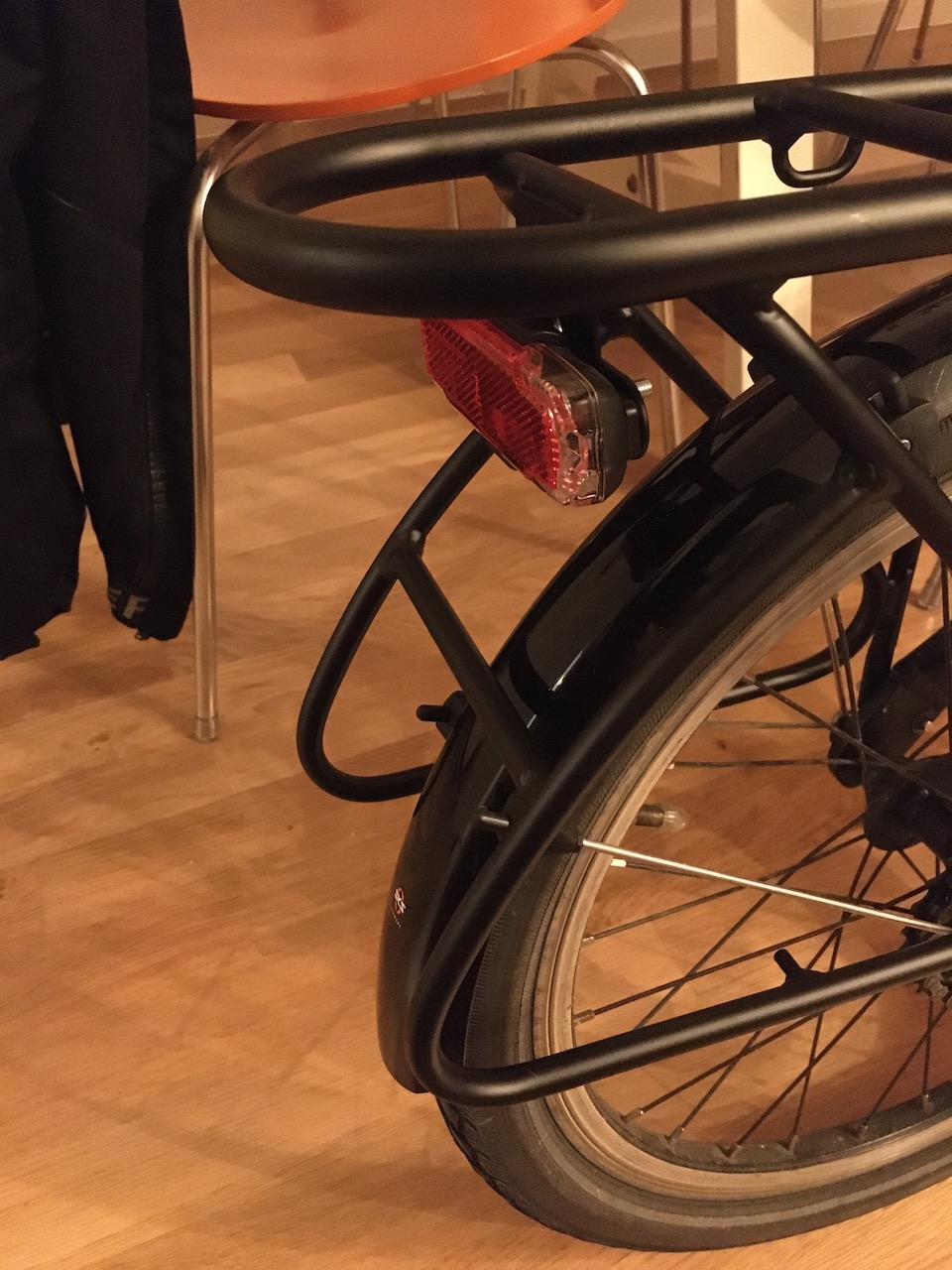

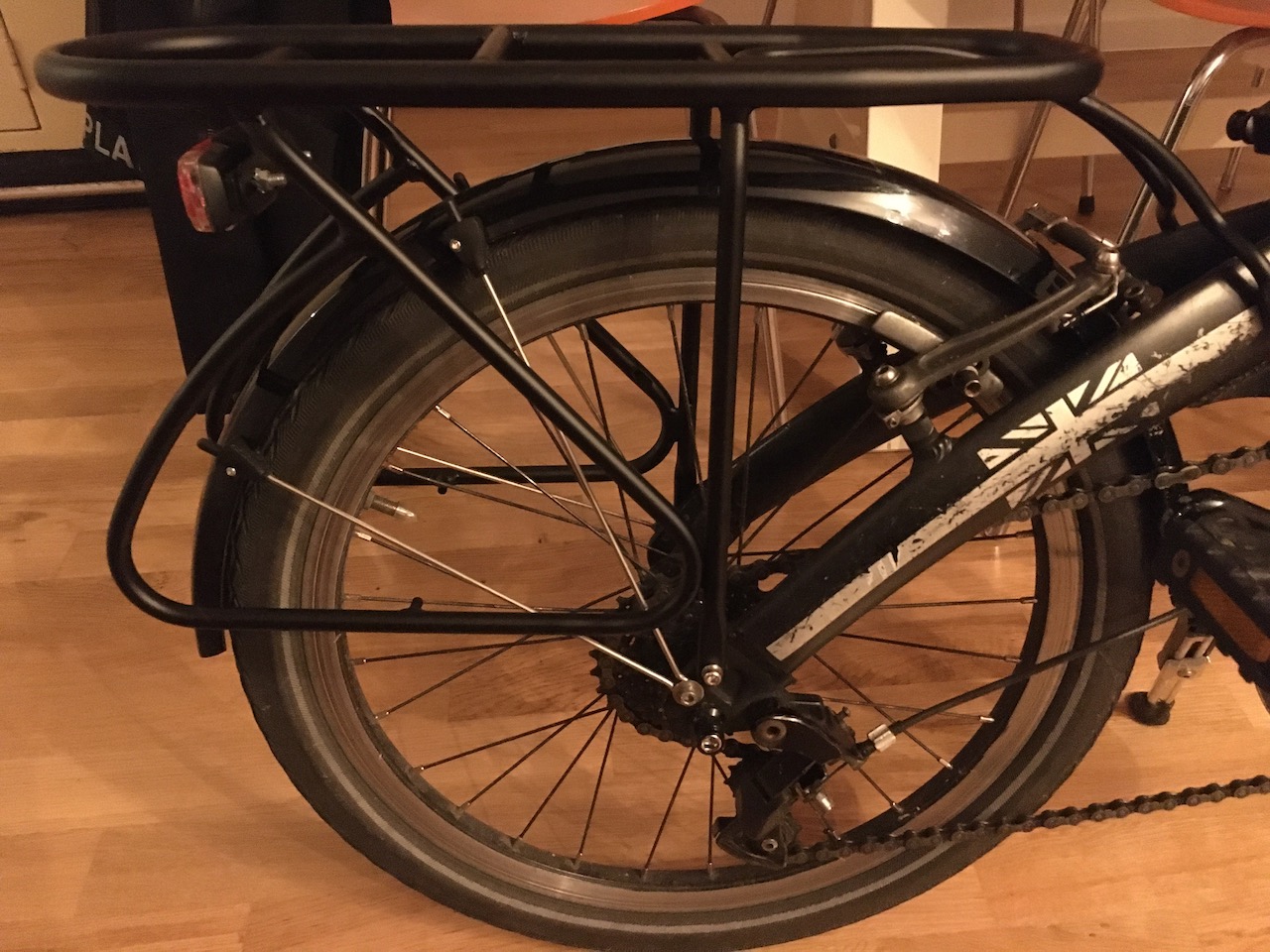


Tell me more please about your experience of Decathlon and the strange riding position… I find myself commuting by rail from Birmingham to Coventry and a folding bike would be really useful, especially for 3km or so of off road cycling at the Cov end (v wide and little used pavement with cycle path). A Brompton is out of my price range and I would worry about theft. A local Decathlon shop is the obvious place to go. I used to be a keen cyclist but have become more anxious in traffic as have grown older and haven’t cycled for about 15 years.
I find the length of the Decathlon bike too short – the distance between handlebars and saddle. That means I feel I am very cramped when riding it. I’m 1m 83cm tall though, so if you are shorter then it might be OK! Try one at a Decathlon store before investing in one!